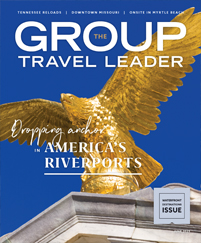For decades, group travel has been popular primarily among two demographics: students under 18 and adults over 55. Young professionals have traditionally made up only a tiny segment of the group tour sector. And while the responsibilities of work and parenting factor largely into this, the phenomenon is also due in part to a perception problem among younger travelers, who often believe tours won’t be a good fit for their travel tastes.
There are some companies that target the young professional demographic, though, including Contiki Tours, which specializes in trips for travelers ages 18-35. The Group Travel Leader recently spoke with Ian Kynor, director of business development for Contiki’s parent company The Travel Corporation, about how Contiki is building its group business among young travelers and how a new generation of tour passenger is embracing group travel.
Here are highlights from that conversation.
Tell us about the role Contiki plays in the group travel marketplace.
Contiki ran its first trip in 1962, and it was student-led. Since then, Contiki has remined true to that. It’s run specifically for 18-35-year-olds. Now we operate more than 400 itineraries on every continent except Antarctica. We have offices in the U.S., South Africa, Honk Kong, Australia and other places, so there’s a wide footprint of where our travelers originate from.
Most of your travelers join pre-scheduled departures as individuals. Are you finding any preformed groups of young professionals who want to travel together?
The core of our business remains solo travelers, but we’re putting a lot of emphasis and infrastructure behind how we can attract and support more affinity groups. We’ve seen a lot of growth in that.
Where are those affinity groups coming from?
The greatest increase is in the educational space. That could be university study abroad but, more specifically, it’s alumni travel. And there are a lot of people who want our expertise with young alumni. Alumni are a very strong part of affinity travel, but the core market has really always been 65-plus. But the number of associations that have a young alumni program presents an opportunity for us to lead.
It’s a lot easier to engage those young alumni when they’re fresh and recently graduated. They’re still very connected to the community. And travel speaks to people at a personal and emotional level. So, to get young alumni engaged in the travel program keeps them in the alumni community. It’s much simpler than losing them for a decade or two and then trying to bring them back.
How do those younger people feel about group travel? Is it difficult to convince them to go on a group tour?
Historically, we’ve not really leaned into the group aspect. We’ve always had groups traveling on coaches, but we didn’t promote that aspect. That started to change for us two to three years ago. We started to get feedback about the groups in our post-trip surveys, and we saw that community was forming organically from the travel. Groups come together on the trip, then they remain together and remain in touch. You have some people who go on reunion trips and try to get a lot of people together on another Contiki trip.
One traveler described herself as an introvert who kept to herself for the first few days on a trip. But at the end, she stood up and said that when she first joined the trip, everyone was a stranger. A few days into the trip, everyone became friends. And now at the end of the trip, everyone is family.
Do you see a growing interest in group experiences among your core demographic?
Absolutely. In 2018, we commissioned a significant research study. One of the major takeaways was about the message that resonated the most with the people we surveyed and the benefits that stood out to them. What surprised us some was how high up the benefit of traveling with a group was. It was meeting new people from a diverse perspective and traveling with a group.
In past marketing, we may not have focused so much on the inclusiveness of that larger group. But starting this year, we’re really going to emphasize the ‘travel together’ component of it.
How important is diversity to that group benefit?
That’s where the benefit really comes in. Sharing travel experiences with other people becomes significant, because you’re seeing the destination from a variety of viewpoints. You might have individuals who are people of color, indigenous or identify as LGBTQ. The way they experience a destination is different from you. You get to feel all that. You get to have that experience, and then the shared experience allows you to have real conversations over a dinner or a drink.
We’re recognizing the need to really promote diversity. That will be in all our marketing and imagery so that people of diverse backgrounds feel like the travel experience is for them and not exclusionary.
How would you advise a young travel lover to try to recruit friends to join them on a group tour?
You don’t need to sell the trip to your friends. Instead, just talk to them about what you’re excited about. Where do you want to go? What culture do you want to immerse yourself in? What speaks to you? If you’re excited about where you’re going and the experiences you’re going to have, all you have to do is share that excitement with your friend group. Your passion is going to be contagious. And that’s enough.












